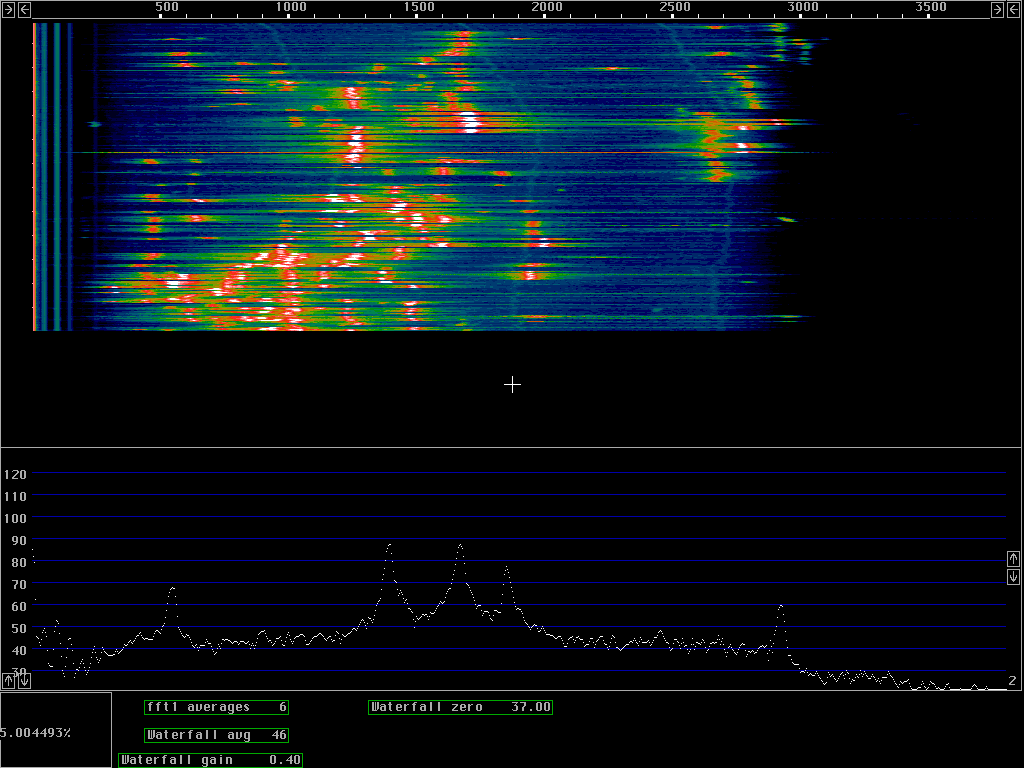|
The graphs below were recorded 20.10 to 20.25 UT on Aug 10 2000.
Fig 1. shows the signal from a TS520 while fig.2 is produced with
a direct conversion receiver.
The antenna was about 10 meters of wire hanging out from a window
to a nearby three.
The center of fig 2 (48kHz) corresponds to 7.050MHz and the whole graph
covers 7.002-7.098MHz with useful sensitivity 7.005-7.095MHz
Fig.1 covers the range 5-8kHz of fig.2 corresponding to 7.007-7.010MHz.
These images are produced with Linux DSP at a very early stage.
The processing is just a straight-forward FFT with some averaging.
The frequency response of the hardware is not compensated so the
noise floor is far from flat.
There is no noise blanker and the wide screen is presented with
smoothed spectrum data so the effective bandwidth is about 100Hz.
At this stage the Linux DSP package is not really useful for weak
signal work (EME) on VHF.
The performance is as any conventional fft program.
To find a really weak signal one has to set the bandwidth to only a few Hz
and zoom the screen so one pixel becomes one fft bin.
It is difficult to find signals with a search range limited to only a
few kHz (although that is all one can get from a conventional SSB receiver).
| 
